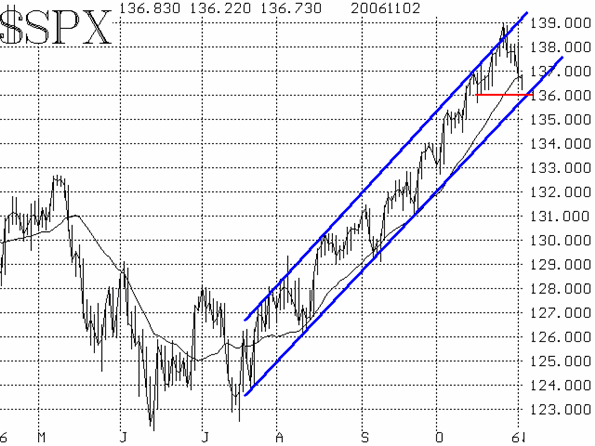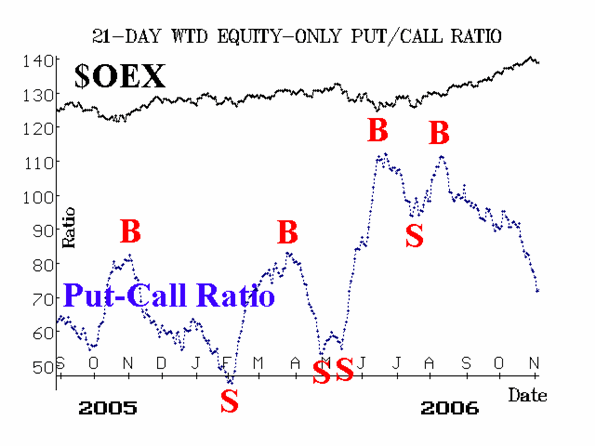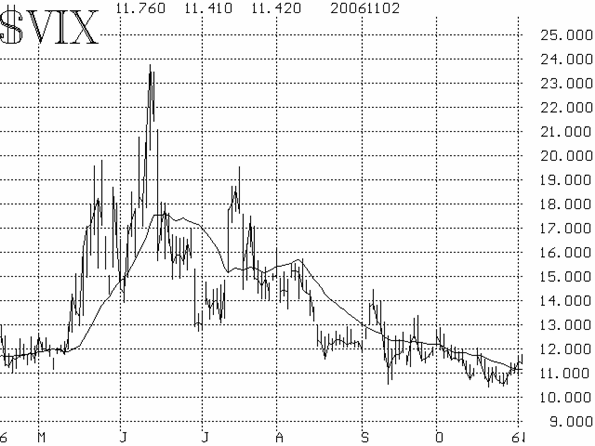The broad market acts tired. After basically advancing in a straight-line fashion for weeks, the market is taking a rest. There hasn't been any serious damage, so the intermediate-term bullish case is still intact. But the overbought conditions need to be worked off -- and that's what's happening.
$SPX has pulled back, but its chart is still bullish. There are several factors offering support in the general area of 1355-1370. First is the 1360-1370 range that was one of the stairsteps to higher prices in mid-October. Then there is the 20-day moving average of $SPX, which is near 1365. Finally, the bottom of the channel that has defined this bull market since the July bottom is near 1355. As long as $SPX is within that channel, the bullish case is intact.

The equity-only put-call ratios have not even blinked on this small correction so far. They contain to drop, even more rapidly than before, and that is bullish. The weighted ratio (Figure 3) has now dropped into the lower third of its chart, while the standard ratio (Figure 2) is about halfway down. That means they still have a lot more room to decline. They would only relinquish their bullishness if they rolled over and began to rise, and that doesn't seem even remotely likely at the current time.


Market breadth is the only area where we have confirmed sell signals. It remains to be seen whether another few days in which declines dominate advances might produce an oversold condition. That would be especially positive if the equity-only put-call ratios remain bullish as well.
Finally, the volatility indices ($VIX and $VXO) remain overbought. They have not risen much during this small market decline. That is, there isn't any panic in this market, nor much fear either. If $VIX rises above 12, that would be a minor sell signal, and if it closes above 14 that would be an outright sell signal.

Separately, it doesn't really seem that the market has spent much time discounting the upcoming election (Tuesday) -- unless you think the October rally was doing that. The only logic for that would be that a Democratic house and a Republican Senate would be gridlocked, and that would be good for Wall Street. However, there are other scenarios as well, and a nasty surprise could cause the market to react badly.
In summary, we would only turn bearish if $SPX violated the lower end of its trend on a closing basis, and that were accompanied by $VIX rising above 14. Otherwise, there may be a bit more to go in this short-term correction, but the intermediate-term bullish outlook is still intact.
Lawrence G. McMillan is the author of two best selling books on options, including Options as a Strategic Investment, recognized as essential resources for any serious option trader's library.